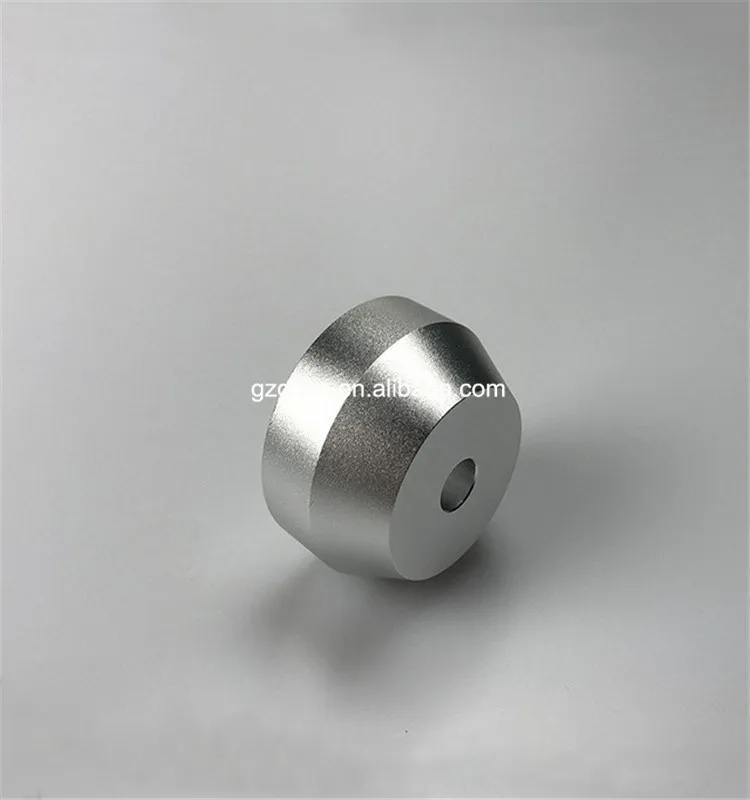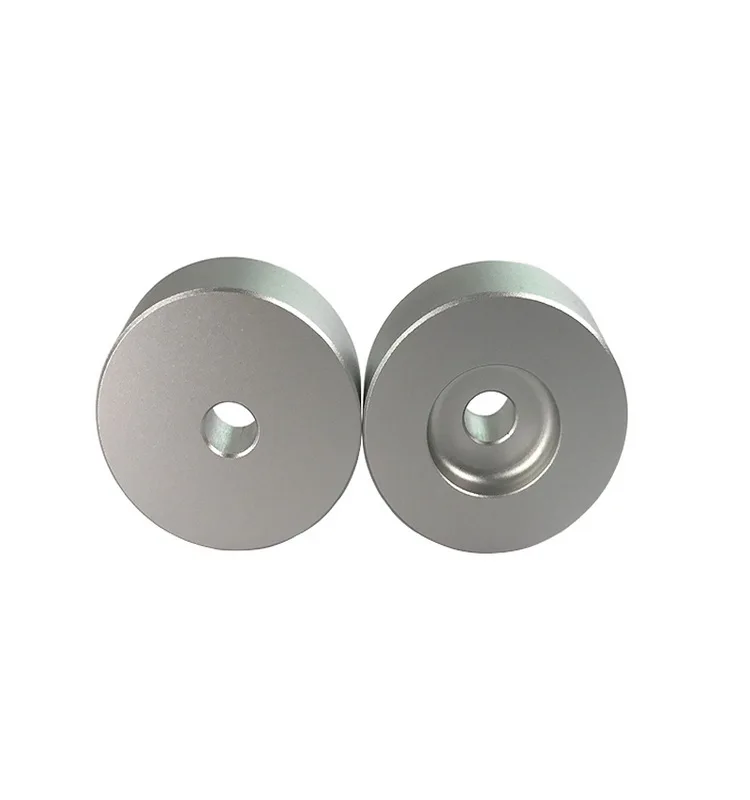
These 7-inch records generally rotate at 45 rpm, less commonly at 33 rpm. There are also (7-inch) 4-track 45 rpm records, called EPs, which stands for 'Extended Play', longer than a single, but shorter than an album. They are the forefathers of the 2-track CDs, also referred to as SINGLES. Records rotating at 45 revs per minute usually have a diameter of 7 inches (17 cm) and contain one or two tracks on each side. Standard 33 rpm records are called LP, standing for 'Long Play' and generally hold 20 to 30 minutes of sound on each side. There are also 7-inch (17 cm) formats that rotate at this speed. Records rotating at 33 revs 1/3 per minute usually had a diameter of 12 inches (30 cm) or, more rarely, 10 inches (25 cm) in the late 50's and early 60's (Elvis Presley, Serge Gainsbourg, etc.) and more recently for certain re-releases and limited editions. There are various formats and playback speeds. The use of this synthetic thermoplastic material instead of wax significantly increased sound quality: reduced background noise, increased frequency response, dynamic range and the running time, which jumped from less than 5 minutes to 30 minutes on 33 rpm records. As vinyl records have a much finer grain (about 50 angströms = 5*10-3 µm), they allow for narrower and closer grooves to be cut. Their acoustic and technical superiority over 78 rpm records immediately became a selling point. They contained Mendelssohn's and Tchaïkovski's music.

The first microgroove records were marketed in 1948. The arrival of the first 'modern' record players coincides with the invention of the microgroove in the USA in 1946 by Columbia. 78 rpm records began to disappear with the advent of the microgroove in the 50's. But the shortage of resin during WWII prompted manufacturers to use vinyl (polyvinyl chloride, or PVC) instead.

They were initially made of SHELLAC (an animal-based resin secreted by an insect), wax, cotton and slate. In fact, they were only rarely recorded at 78 rpm, instead at speeds of up to 66 and 103 rpm, to extend recording time, sometimes to the detriment of the frequency response. Depending on size, they could hold between 3 and 5 minutes of sound. It was a microgroove disc with a diameter between 10 and 12 inches (25 and 30 cm), with usually one track on each side. The forefather of the vinyl record is the 78 rpm record.
33 RPM ADAPTER HOW TO

33 RPM ADAPTER BLUETOOTH
USB / Digital / Bluetooth Phono Preamplifiers.
33 RPM ADAPTER UPGRADE
How do I upgrade my turntable ? Discover.How do I choose a Hi-Fi cartridge ? Discover.USB / Digital / Bluetooth / Phono Turntables.

Presumably, it is powered by the spinning 33 RPM platter, and gears this down to 16 RPM for the record placed on top. While the mechanical details are not explained, it allows a 16 RPM record to be played on a 33 RPM turntable. The article does include an interesting adapter, shown here. Eventually, curiosity got the better of me, and I checked out a 16 RPM talking book from the library, just so that I could play it at home. If you search eBay today for 16 RPM records, the most common search result is this talking Bible.Īs a kid, my record player had the setting for 16 RPM. The format was used mostly for “talking books.” The best seller was probably the Bible, which was recorded in the early 1950’s at the lower speed. At the time, the maximum frequency response went only to about 9000 Hz. But the article noted that the speed, while longer playing, had inherently lower fidelity than higher speeds. Most notably, some records were produced for the benefit of Chrysler’s Hiway Hi-Fi experiment, which included a record player for the car. The 1957 article predicted, erroneously it turns out, that “the growing catalog of recorded material and new playback equipment in all price ranges proclaim that the tide may yet turn to 16 rpm and roll into the arena with quite a splash.”Ī few musical recordings were issued on 16 RPM. More precisely, the records played at 16-2/3 revolutions per minute, and most moderately priced phonographs in the 1960’s would play the speed, along with the more common 33, 45, and 78 RPM speeds. Sixty years ago, the August 1957 issue of Popular Electronics carried an article about the forgotten stepchild of audio recording: The 16 RPM record.


 0 kommentar(er)
0 kommentar(er)
